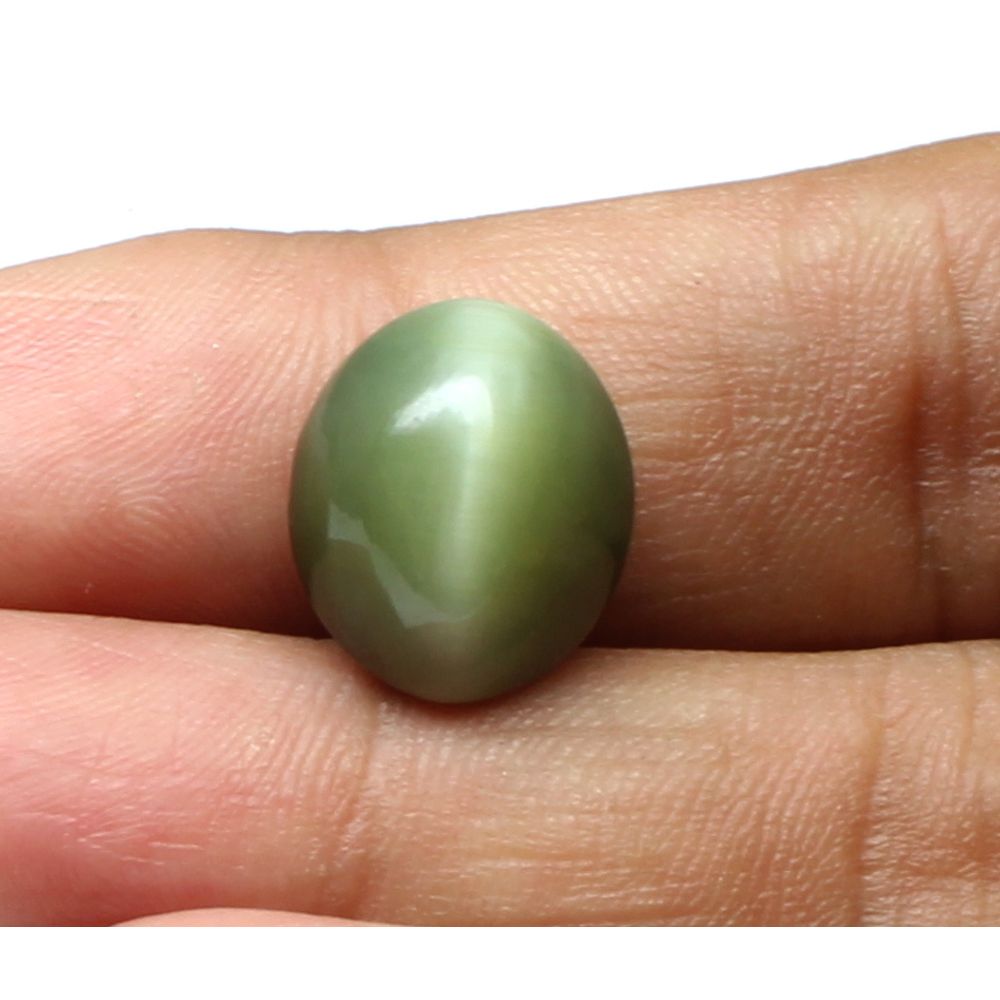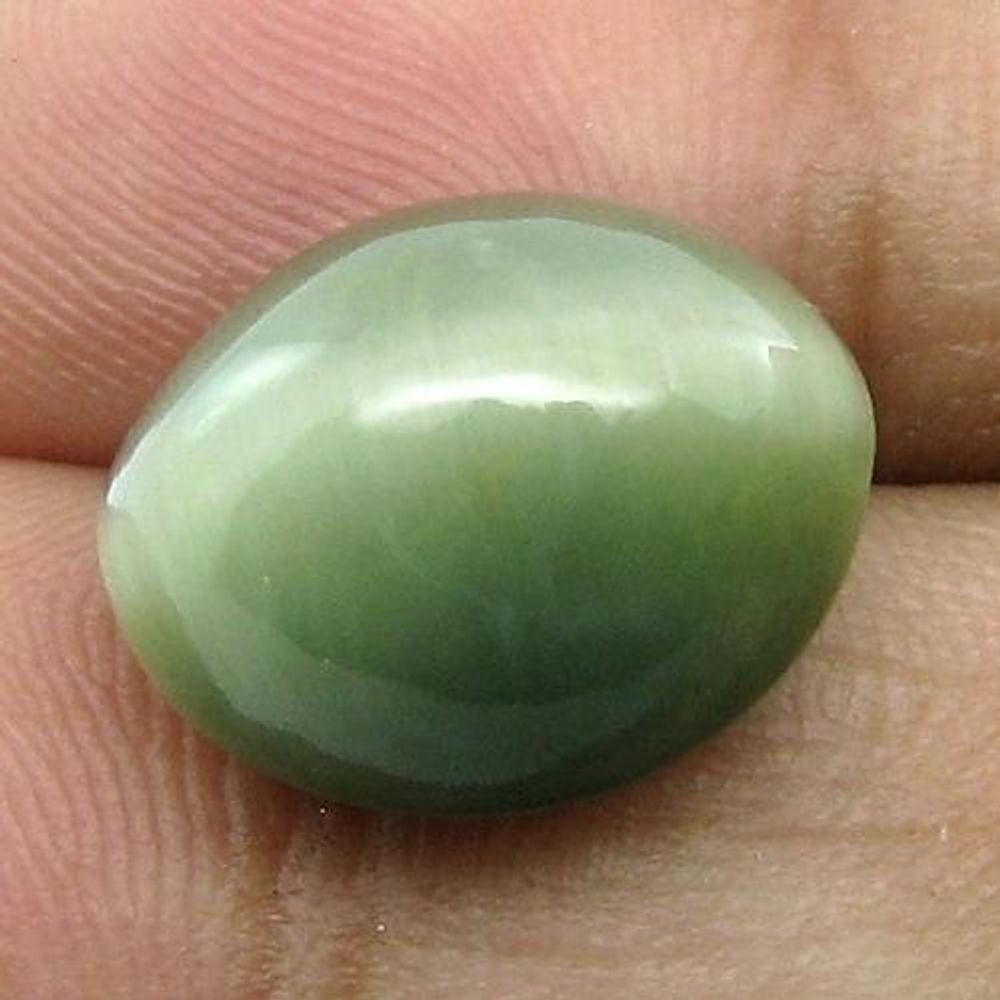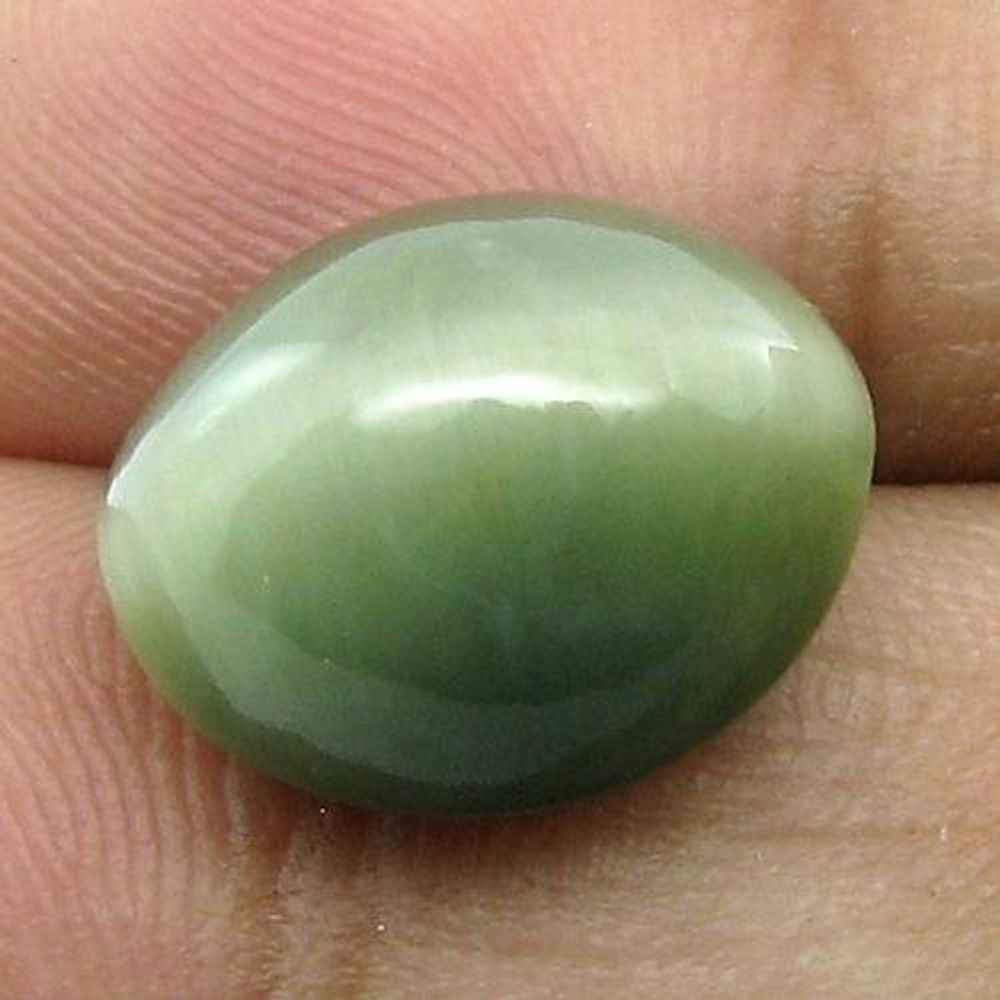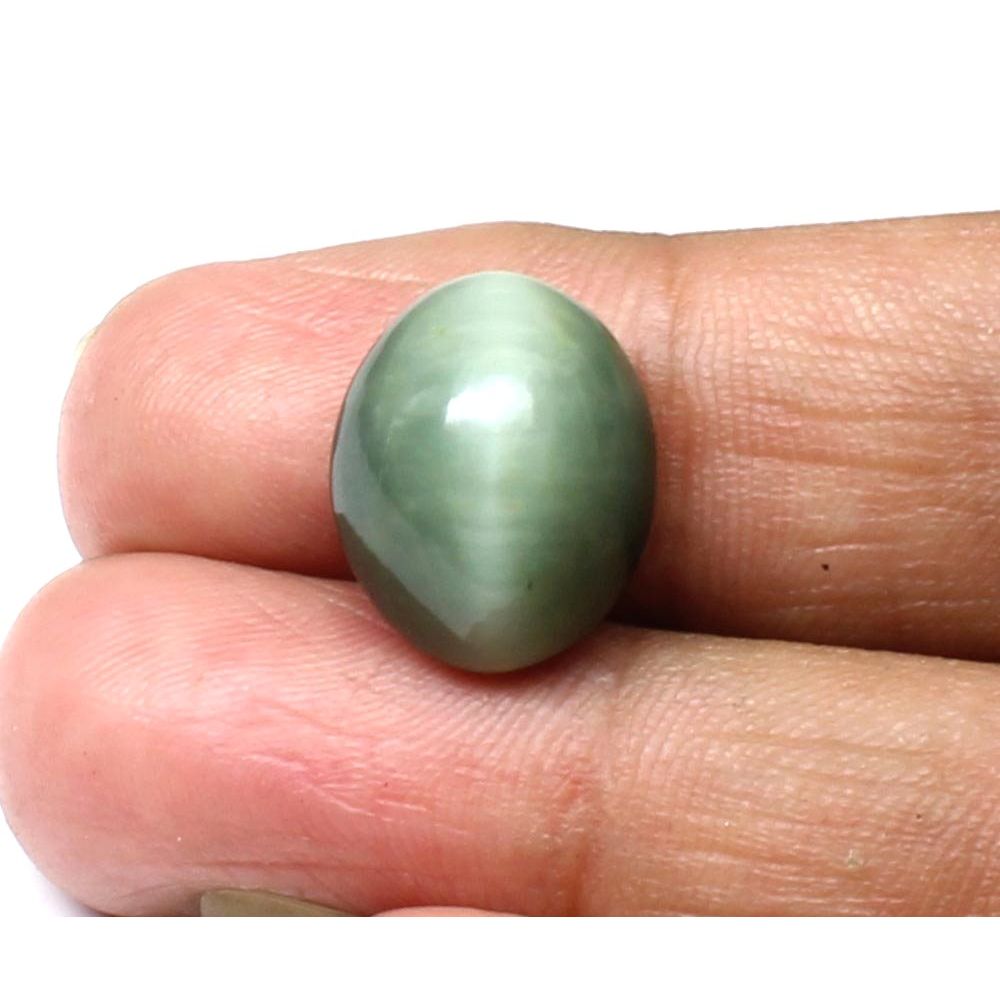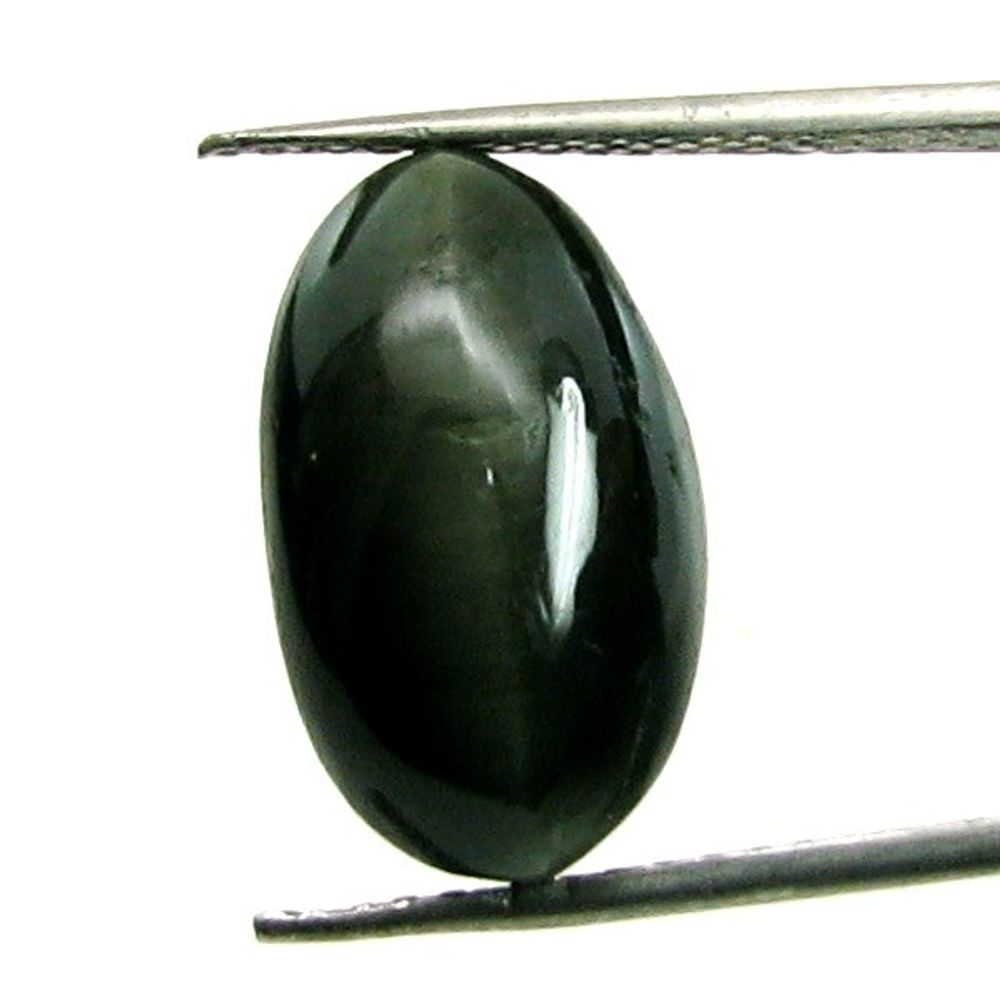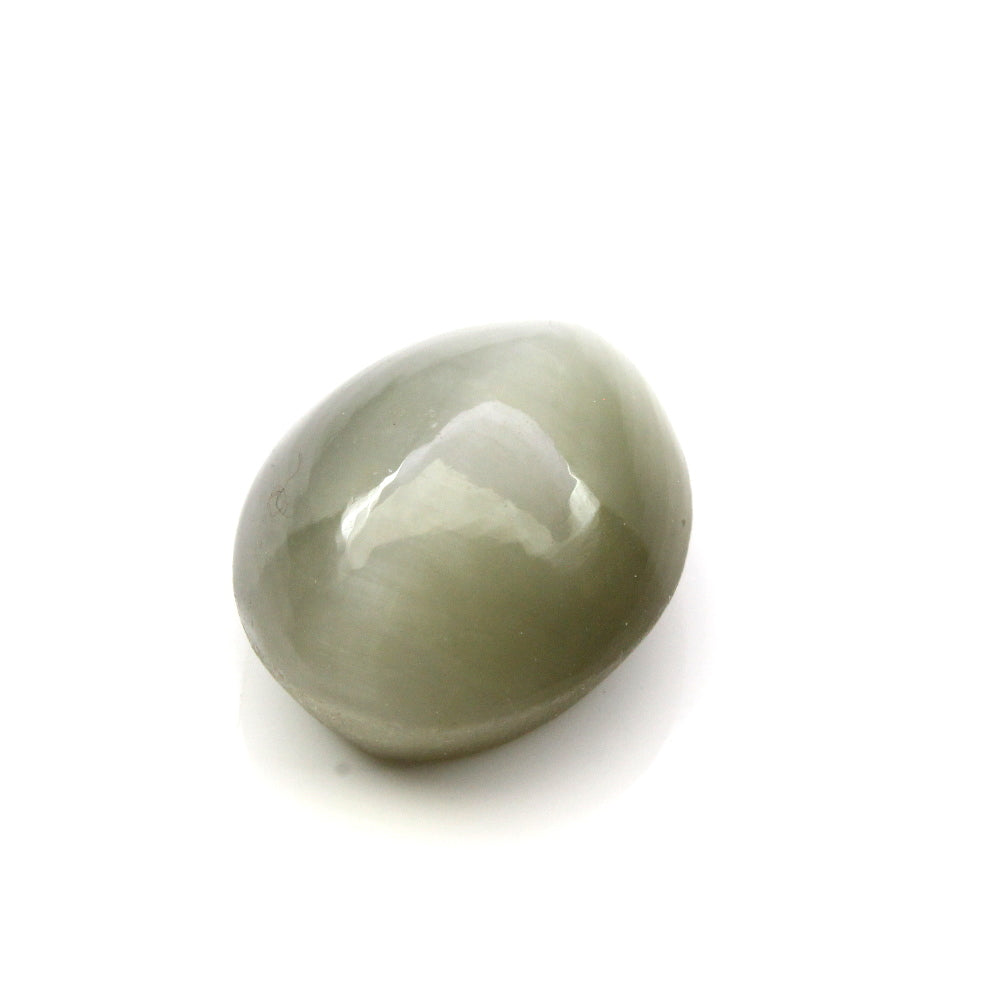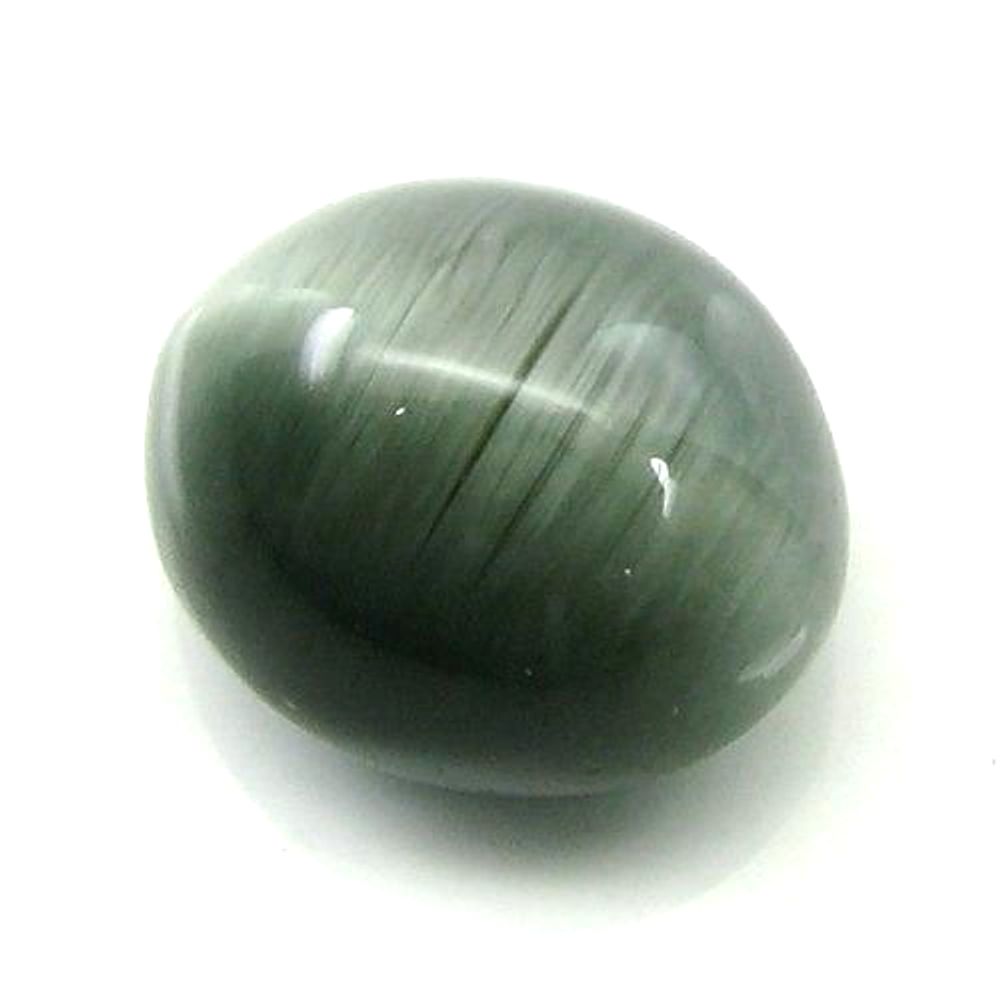Cat's Eye (Lehsunia,Vaidurya)
The favorite gemstone of Ketu is "Paidurya," also known as Cat's Eye.
Different Names of Catseye gemstone:
- In Sanskrit: Vaidurya, Vidalaksh, Abhraroh, Rashtrak, Meghkhurankur, Balasurya, Vidur Ratna, Sutra Mani.
- In Hindi: लहसुनिया (Lahsuniya).
- In Persian: Vaidur.
- In English: Cat's Eye Stone.
Varieties of Cat's Eye (Vaidurya):
The varieties of Cat's Eye include "Hem Vaidurya," which is yellow in color. Cat's Eye gemstones glow in the dark and are made by cutting fibrous stones. Hem Vaidurya is an aluminate of beryllium, with colors ranging from light yellow to brown and green. Flawless gemstones are found in Magok Khano, Upper Burma, and Ghana, West Africa. The yellowish-green color of some Cat's Eye stones is due to ferrous oxide. Jewelers often refer to this variety as chrysolite.
Colors:
Cat's Eye is mainly found in four colors:
1. White
2. Yellow
3. Green
4. Black
According to some scholars, it can also be yellow, black, golden, gray, green, or white. The "Vidalaksh" variety is usually brown with a vitreous luster and silk-like shine. It is both transparent and translucent.
Physical Properties:
- Hardness: 8.50
- Specific Gravity: 3.68 to 3.78
- Refractive Index: 1.750 to 1.757
- Refraction: 0.010 to 0.015
Fascinating Display of Colors:
In the dark, Cat's Eye displays a captivating play of colors. The gemstone's shine resembles a cat's eyes, with a silky luster and green hue. When cut into a cabochon, the light focuses into a line or strip that moves across the gem's surface. As the gem is rotated, the line changes position, mimicking the movement of a cat's eye. This moving line gives the gemstone the name "Sutramani," a result of its fibrous structure.
Places of Origin:
- International: Sri Lanka, Brazil, China, Kabul, and Burma.
- India: Himalayas, Trivandrum, Trikut, Vindhyachal, Cuttack, Sundarban, Sripur, and other border areas.
Identification of Good Cat's Eye:
The best Cat's Eye stones have a yellowish luster and a clear white thread running through them. The straighter the line, the better the gem. If the thread isn't visible, the stone is called "Sheet." Cat's Eye stones without a thread are referred to as "Katketak." According to ancient beliefs, a stone with black and white mixed freckles, symmetrical, vibrant, and wrapped in a white scarf-like pattern is considered the finest.
Qualities:
Cat's Eye should be shiny, smooth, slightly heavier than average, and of high quality.
Defective Cat's Eye:
A defective Cat's Eye should not be worn, as it can cause various misfortunes, such as enemy trouble, diseases, eye problems, weapon injuries, loss of wealth, and family discord. Defective stones include:
1. Spotted
2. Pitted
3. Mica-filled
4. Netted
5. Numb
6. Spotted
7. Stranded
8. Ripped
9. Bloody
10. Five-striped
11. Honey-spotted
12. Black-spotted
13. White-spotted
Types of Cat's Eye:
1. Kanak Khet: The best Cat's Eye.
2. Dhumr Khet: Dusty-colored with white threads.
3. Krishna Khet: Black-colored with black threads.
Testing Methods:
1. Rubbing Cat's Eye on a white cloth increases its shine.
2. It shines like a cat's eyes in the dark.
3. In darkness, rays seem to emanate from the stone.
4. It has two to three white threads that float within the glow.
5. When placed on a bone, it creates a hole within a few hours.
A Cat's Eye with all these qualities is genuine.
Effects on the Wearer:
Wearing Cat's Eye can remove misery, poverty, disease, and spiritual troubles.
Effects of Catseye Vaidurya on Diseases:
Wearing Cat's Eye in a ring or consuming its ashes can help with various ailments, such as bloody diarrhea, eye diseases, pitta dosha, diabetes, congestion, piles, indigestion, and impotence.
Who Should Wear Cat's Eye?
If Ketu is poorly placed in a person's birth chart, wearing Cat's Eye is considered auspicious. It is also recommended under the following conditions:
1. When Dhanesh, Aayesh, Rajyesh, Bhagyesh, or Sukhesh are visually connected with Ketu in the horoscope.
2. If Ketu is placed with Mars, Jupiter, or Venus in the horoscope.
3. If Ketu is in the second, fourth, fifth, ninth, or tenth house.
4. If Ketu is in conjunction with the Sun.
5. If Ketu is placed with Panchamesh or Navamesh.
6. If Ketu is the lord of an auspicious house but is placed in the sixth or eighth house.
7. During Ketu's Mahadasha or Antardasha.
8. If Ketu is with auspicious planets.
9. Wearing Cat's Eye is especially beneficial for those with Pisces, Aries, Leo, and Sagittarius signs or with Ashwini, Magha, and Mula constellations.
Wearing Guilty Vaidurya:
If the Sun, Moon, Mars, or Jupiter are present along with Ketu in the birth chart, wearing guilty Vaidurya can also bring benefits.
Best Method of Wearing Cat's Eye:
For best results, wear Cat's Eye on a Friday or Wednesday, when the Moon is in Pisces or Sagittarius, during the Ashwini, Magha, or Mula Nakshatra. At 11:00 AM, set the stone in a ring made of iron or Panchdhatu (five metals). After purification, place the ring on a Ketu Yantra weighing seven tolas and worship it following the rituals. Offer it in a Havan with 2,100 mantra chants of "Om Hreem Kreem Kru Krur Rupinye Kaitve Swaha."
Weight of Cat's Eye:
The gemstone should weigh at least 4 ratti, and the metal should be 7 ratti.
Duration of Effect:
The stone remains effective for three years from the day it is worn. After that, it loses its effect and should be replaced or sold.


